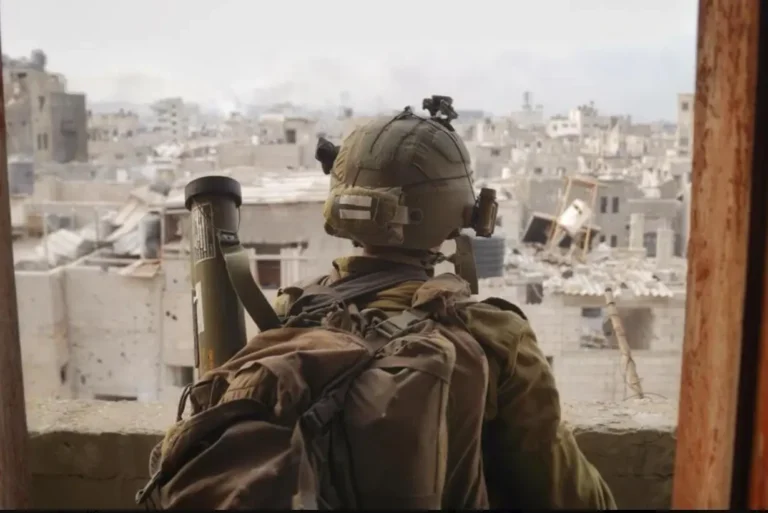On October 7, Hamas militants launched a surprise attack on Israel, killing hundreds of civilians and kidnapping others. Israel responded by shelling the Gaza Strip, while meanwhile the first military reinforcements were sent to the army. Men, women and children continue to die, with weapons and supplies arriving from allied countries. But who supplies arms to Israel and Hamas?
Table of Contents
The joint statement signed by Western countries
The U.S. has surely sent ammunition and other military equipment to Israel. But, despite concerns about the possibility of further escalation of the conflict, the White House has stated that there are no plans to send troops to Israel. By sea however it has already deployed its fleet near Gaza.
In addition to the U.S., Germany, Britain, France and Italy have also pledged assistance to Israel. On Monday, Oct. 9, the five countries issued a joint statement condemning by the militant group Hamas.
Who is providing arms to Israel
Spending around $3 billion a year, the United States already emerges as one of Israel’s biggest supporters. America, in the wake of the Hamas attack, has also made it known that it will strengthen support in the Middle East by sending additional munitions and redirecting fighter planes and aircraft carriers to the hardest-hit territories.
In particular, the USS Gerald R. Ford, the newest U.S. aircraft carrier, has already been diverted to the U.S. station in the Mediterranean in the direction of Israel. Included in the attack force of the USS Gerald R. Ford are several other cruisers and destroyers. The arsenal included:
- the USS Normandy, a Ticonderoga-class guided missile cruiser that can launch missiles to strike land targets or to defend against incoming aircraft or bombs;
- the USS Thomas Hudner, one of four Arleigh Burke-class guided-missile launching destroyers in the fleet;
- the USS Ramage, another Arleigh Burke-class guided missile destroyer;
- the US Navy destroyer USS Carney;
- the USS Roosevelt, the fourth Arleigh-Burke-class guided-missile destroyer launcher in the fleet designed to operate independently;
- several F-35 fighter planes, considered the most advanced combat aircraft in the world;
- several F-15 fighter planes, extremely maneuverable tactical fighters designed to give the Air Force an edge in air-to-air combat;
- several F-16 fighter planes, designed for both air-to-air and air-to-ground combat;
- several A-10 fighter aircraft, designed to provide close air support to ground forces;
- the United States is also upgrading many of its Air Force operations in the region, including F-35 fighter planes, and deploying several stealth fighters.
According to U.S. media, Israel also reportedly requested interceptors and precision-guided munitions, but the specific munitions sent to Israel are unclear.
As reported by Al Jazeera, moreover, the incoming arsenal would be added to the $2 billion worth of U.S. ammunition already pre-delivered in recent months to Israel.
Read also: The Gaza Strip: history, what it is and who controls it
How does Hamas get its weapons?
The Palestinian group Hamas controls the Gaza Strip, a narrow strip of land, home to some 2.3 million people, which Israel controls with tight vigilance of sea, air and land borders-despite its official and complete withdrawal in 2005-to prevent the supply of weapons to Hamas in the region. For this reason, the movement of people in Gaza is tightly under control.
The Gaza Strip is surrounded by Israel on two sides and borders Egypt on the side where there is no sea. The western end faces the Mediterranean Sea, where the Israeli Navy restricts the movement of people to 12 nautical miles. And on land there are only two border crossings controlled by the Israeli and Egyptian militaries (in an area of 365 square kilometers).
Arms traffickers, however, often use underground tunnels as an alternative route to supply arms. On the border with Egypt, for example, tunnels are open to transport artillery into the region (such as Fajr-3, Fajr-5 and M-302 rockets supplied by Iran and Syria).
Hamas has also developed its crude rocket technology over the years, but Iran-supplied weapons have reportedly been used for recent attacks to get past Israel’s nearly impenetrable Iron Dome air defense system. At present, Iran has supported Hamas’ Operation Al-Aqsa Flood. But has denied any direct involvement in the war and dismissed Israeli claims that it is funding the operation.
The U.S. State Department in 2021 said Hamas receives training, funding and weapons from Iran. According to reports, 70 percent of total funding to Hamas comes from Iran.
Taliban arms to support Hamas
Several reports also suggest that Hamas uses U.S.-built weapons supplied by the Taliban from Afghanistan. In 2021, let’s remember, the U.S. ended its operations in Afghanistan. But it left behind a stockpile of weapons that were seized by the Taliban after taking control of the country.
Meanwhile, EU foreign ministers have signaled that they will discuss the proposed suspension of EU aid to the Palestinian territories. The European Commission confirmed Monday night that it is initiating an urgent review of its financial assistance to Palestine. This, to ensure that “no EU funding indirectly enables a terrorist organization to carry out attacks against Israel.”
The EU is the largest donor of aid to Palestinians residing in Hamas-controlled Gaza and the West Bank, ruled by President Mahmoud Abbas’ Palestinian Authority. The financial support is used to pay salaries and pensions, improve health services and access to water, and provide humanitarian aid in times of conflict.
Read also: 10 things to know to better understand the war between Israel and Hamas












